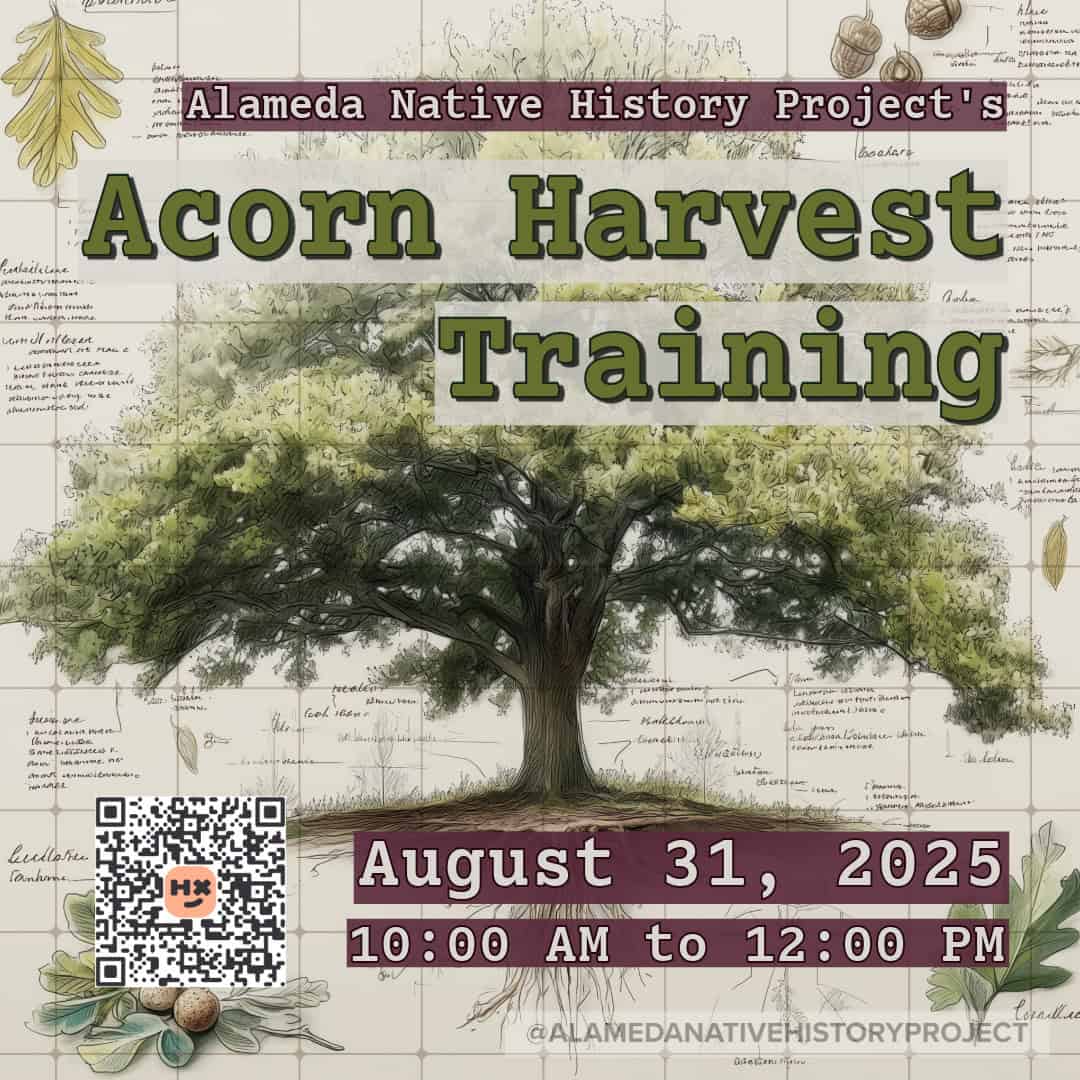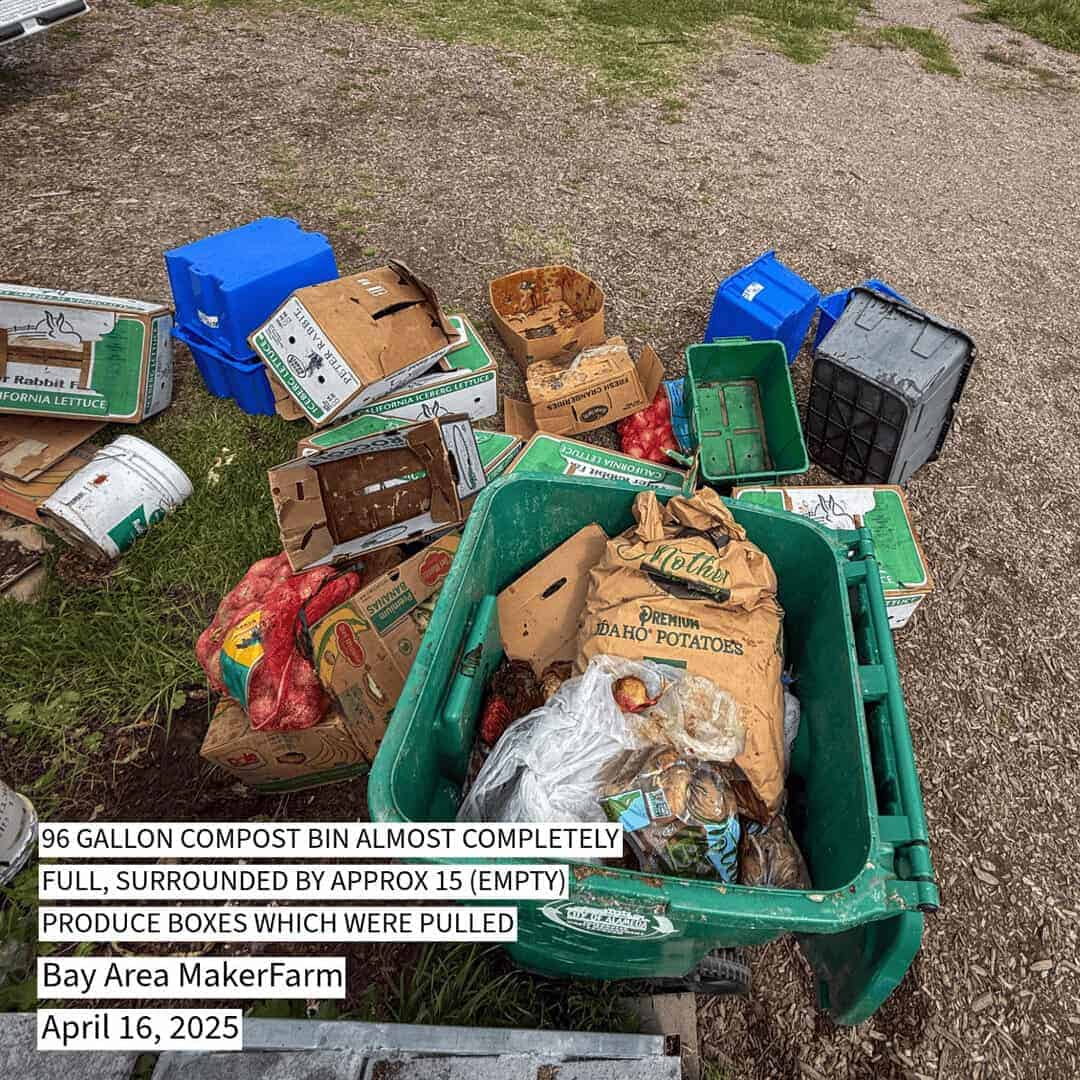Author’s Note (Updated November 13, 2025)
There are a number of things I want to say about this article:
First, this is a culmination of 5+ years of research and investigation. And it was only because of the Official Statement by the Muwekma Ohlone Tribe of the San Francisco Bay Area [included in full at the end of this article] that I was finally able to put together some missing pieces about Corrina Gould’s relationship to Muwekma–specifically, her descent and her belonging to the Muwekma Ohlone Tribe of the San Francisco Bay Area. During the course of researching this matter, I interviewed Tribal Attorneys, as well as members of the Muwekma Ohlone Tribe, and representatives from several local organizations who freely volunteered their reasons for no longer working with Corrina Gould.
Second, despite several comments by Deja Gould on public posts, neither Deja Gould, nor her mother, Corrina Gould have directly answered any of the questions presented during the course of our investigation. Sogorea Te Land Trust has only provided legally required documentation related with their tax filing and reporting duties and responsibilities as a charitable organization.
Third, I used ChatGPT to help me write this article. Specifically because I needed help keeping track of the sections, its tone, and to make sure that I created something complete and ready for publication. That said, the facts presented in this article are not AI hallucinations. This article was carefully constructed and painstakingly reviewed, over and over again, to ensure the veracity and completeness of the information presented here. My sources are open and available for anyone who wants to verify them.
Fourth, I was not paid to write this article. Doing the right thing, reporting the truth, and telling the historical background of Bay Area Native American history is the mission of this project. It’s what we do. And we do it without asking for compensation. This is an independent organization, and we are beholden to no one.
Fifth, I will not respond to personal attacks. I will not waste my time proving to anyone who I am. I do not care what you think. If your argument does not lie within the context of the material presented here, it is irrelevant to the message of this article. And your desperation to escape the truth and ignore the facts–laid bare here–is your choice.
Finally, this article was updated in November 2025 to bring it into closer alignment with the Official Statement of the Muwekma Ohlone Tribe of the San Francisco Bay Area on Corrina Gould, the Confederated Villages of Lisjan, and Sogorea Te Land Trust. As of this update, neither Corrina Gould, nor Deja Gould, nor Sogorea Te Land Trust has provided any substantive response that corrects, clarifies, or refutes the documented facts presented here or in the Tribal statement.
1. Introduction
For years, Corrina Gould has positioned herself as a tribal leader, a rematriation visionary, and a voice for Ohlone land return. She has founded organizations, signed land agreements, created a land tax, received millions in funding, and claimed to speak on behalf of Ohlone people. But her story is built on fiction.
Corrina Gould is not the Chairwoman of a tribe. She is the head of a nonprofit corporation. The so-called “Confederated Villages of Lisjan” did not exist prior to 2018. It has no documented history, no enrollment records, no government, and no collective identity beyond a name she gave it. The Sogorea Te Land Trust is not an Ohlone organization. It is a nonprofit corporation led by a single unenrolled individual–someone who only discovered her genealogy because the real Ohlone tribe shared it with her.
That tribe is the Muwekma Ohlone Tribe of the San Francisco Bay Area: the only tribal government with documented continuity, legal standing, and ancestral responsibility for this land. Muwekma are the living successors of the historic, federally recognized Verona Band of Alameda County. They descend from the Indigenous people forced into Misión San José de Guadalupe, Santa Clara de Thámien, and San Francisco de Asís, and today, Muwekma has over 600 enrolled members. They have fought for their sovereignty, defended their sacred sites, and preserved their genealogy and governance through every wave of erasure: missions, courts, colonization, and nonprofits.
And yet, Muwekma is being erased again; this time, not by settlers, but by activists claiming their identity, collecting land and donations under their name, and silencing them with the language of “solidarity.”
This isn’t just confusion. This is colonization, rebranded and crowd-funded. It is settler violence in a progressive disguise. It is a lie that has been funded by foundations, platformed by institutions, and repeated by people too afraid–or too lazy–to ask basic questions: Who governs this tribe? Who are its members? Where is the money going? Who was consulted? What elections have been held?
This is a pattern of identity fraud, land misappropriation, and community displacement, and it has gone on for too long. The time for “raising questions” is over. The answers are here. And this is the record.
2. The Myth of the Confederated Villages of Lisjan
The “Confederated Villages of Lisjan” (CVL) did not exist prior to 2018. It has no historical precedent, no documentation in early ethnographic records, no mention in tribal enrollment rosters, no record in legal proceedings, and no lineage-based governance structure. It is not a tribe. It is a name invented by Corrina Gould–retroactively applied to give the appearance of a tribal coalition that never existed.
The word “Lisjan” itself is poorly understood and inconsistently used. Gould cites a 1920s interview with her ancestor, José Guzmán, who described himself as “Lisjanes”–but this was simply a reference to the place he was from: the Nisenan name for the Pleasanton area. He did not say he was from a “Lisjan Tribe.” He did not describe a confederation of villages. He was a Muwekma ancestor who spoke Spanish—maybe as a third language, after Nisenan and Chochenyo–he did not speak English, and was likely describing location, not identity. And yet, Gould has used this single, mistranslated phrase to build an entire tribal identity.
Gould publicly presents herself not just as a tribal member, but as a Tribal Chairwoman–a title that holds formal and legal weight in actual tribal governments. But her organization has no tribal enrollment. No constitutional structure. No elections. No council. No ratifying documents. There is no list of what “villages” make up the supposed confederacy. There are no lineages publicly claimed. No other representatives from these villages ever appear at events or claim descent. It is a title without a people. A nonprofit corporation posing as a nation.
In reality, Gould descends from the very same lineages as enrolled members of the Muwekma Ohlone Tribe of the San Francisco Bay Area. On December 13, 2005, she requested her genealogy from then Muwekma Chairwoman Rosemary Cambra, and the Tribe’s ethnohistorian, Alan Leventhal, prepared a detailed report that traced her ancestry back to specific pre conquest Ohlone villages. It was only through Muwekma’s documentation and research that she learned she descends from Muwekma ancestors. Instead of enrolling or standing with the Tribe, she took that information and built her own identity-based platform, weaponizing documentation that was shared with her in good faith.
Her family is not excluded from Muwekma. In fact, her relatives–including her aunt and uncle, and their extended families–have been enrolled Muwekma members since 1995. Gould made a choice not to enroll. And then, she made another choice: to leverage Muwekma’s genealogy, history, and sacred sites to build her own nonprofit brand.
She presents herself as a Tribal Chairwoman–but she is the chair of a corporation. And she uses that corporation to appear as if she governs a sovereign tribal nation, when in fact, she governs nothing but a grant-seeking nonprofit made up of herself, her daughter, and a cohort of non-Native allies and unaffiliated supporters.
In its Official Statement, the Muwekma Ohlone Tribe identifies the so-called Confederated Villages of Lisjan as pure political fiction designed to enrich Gould, and describes the group as a collection of activists, many of them non Native and unrelated to one another, who share no common tribal enrollment or traditional governance.
The result is a cheap knock-off of a tribal government, built on the illusion of collective identity and the erasure of the very people whose legacy she claims to protect. Her statements and symbolism are packaged for public consumption. But there is no tribal infrastructure behind it. No cultural authority. No community accountability. It is a performance built on selective ancestry, strategic branding, and the quiet theft of another tribe’s history.
3. Funded Fabrication and Institutional Complicity
Since its creation, the Confederated Villages of Lisjan and its sister organization, Sogorea Te Land Trust, have received millions of dollars in grants, donations, and land transfers–funding that was intended to support Indigenous land return, cultural revitalization, and tribal sovereignty.
But that funding is not going to a tribe. It’s going to a nonprofit corporation with no elections, no enrollment, no federal or state recognition, and no documented governance. The public has been led to believe that Sogorea Te Land Trust is an Ohlone-led effort to rematriate ancestral lands. But in reality, the land is not being returned to a tribe… It’s being handed to an individual–who has no interest in helping her real tribe–and her nonprofit corporation.
The most egregious example is the West Berkeley Shellmound. In 2023, the City of Berkeley announced that it would transfer the historic site to Sogorea Te Land Trust. In the meeting minutes, the city described the action as “returning the land to the Ohlone people.” But this was a lie. Sogorea Te Land Trust is not an Ohlone tribe or tribally governed entity. The land was not returned to Muwekma–the only federally documented tribe connected to that site. Instead, it was handed to a nonprofit that claims Indigenous identity without legal or cultural accountability.
This supposed “return” was made possible by more than twenty million dollars in grant funding to Sogorea Te Land Trust from Regan Pritzker’s Kataly Foundation–which the Muwekma Ohlone Tribe explicitly identifies in its Official Statement as a taking of Muwekma land rather than a return of land to the rightful tribal government.
This confusion is not accidental. Gould has intentionally blurred the line between nonprofit and tribe. She invokes language like “rematriation,” “sovereignty,” and “traditional territory,” while never disclosing that her organization has no formal recognition, no election process, no ratified tribal rolls, and no council oversight. Funders and institutions allow it because it’s easier than doing the work of real consultation.
Organizations that have partnered with CVL or STLT include:
- Katalay Foundation
- Berkeley Center for New Media (BCNM)
- The Matrix Center at UC Berkeley
- Gill Tract Farm Coalition
- Planting Justice
- Interfaith Movement for Human Integrity
- Friends of Joaquin Miller Park
- Sacred Sites Protection & Rights of Indigenous Tribes (SSPRIT)
- AIM-West
- Eden Housing (donated 3 acres of land)
- First Congregational Church of Oakland (STLT’s landlord and mailing address)
- Shellmound.org / Coalition to Save the West Berkeley Shellmound
These institutions have played a role in fabricating legitimacy. They’ve repeated claims without verification. They’ve entered into land agreements and awarded grants without consulting the federally documented tribal government whose sovereignty they’ve bypassed.
This is not accidental. This is the institutional funding of a fiction.
And every time a university, foundation, or nonprofit puts Sogorea Te Land Trust on a panel, signs an MOU, or writes a check, they’re not standing with Ohlone people. They’re standing with a narrative built on erasure–one that excludes the very tribe whose homeland they claim to “rematriate.”
4. Weaponizing Rhetoric to Avoid Accountability
Corrina Gould frequently accuses her critics–including enrolled Muwekma members–of “perpetuating colonial violence.” She uses the language of decolonization to shield herself from scrutiny and shut down legitimate questions about her identity, governance, and funding. But this is not decolonial work–it is the strategic misuse of anti-colonial rhetoric to avoid accountability.
This tactic has proven effective, especially among non-Native supporters who are unfamiliar with the difference between actual tribal sovereignty and self-appointed identity. In Gould’s framing, any critique becomes “lateral violence,” and any push for clarity is “divisive.” As a result, even basic questions–Who are your enrolled members? When do you hold elections? What is your governance structure?–are dismissed as hostile.
The irony is unavoidable: Gould accuses others of colonial harm while collaborating with the very institutions that enforced settler violence–churches, universities, real estate developers, and city governments. She denounces the legacy of the Catholic mission system while operating out of a church. She claims to speak for Ohlone people while silencing Muwekma, the tribe she descends from.
The harm here is not theoretical. Every time Gould uses progressive language to shut down real tribal voices, she reinforces the structures of colonization. She replaces truth with optics, community with control, and shared identity with personal branding.
This isn’t what decolonization looks like. It’s what erasure looks like–draped in the language of justice, funded by people too uncomfortable to ask questions, and defended by institutions more interested in performance than accountability.
5. A Reckoning Rooted in Research
This project didn’t begin with opposition. It began in good faith.
In 2020, I supported Corrina Gould. The City of Alameda was considering renaming Jackson Park to Chochenyo Park, a gesture I backed without hesitation. Gould was present at those discussions. At the time, her narrative seemed compelling. Her cause appeared righteous. Like many people, I wanted to help uplift a story that claimed to center Indigenous land and sovereignty.
So I began researching, intending to support her work. I looked for historical records, linguistic references, maps–anything that could substantiate and elevate her cause. But what I found instead was something Gould never expected anyone to look for: the truth.
And that truth pointed, again and again, not to a “Confederated Villages of Lisjan,” but to the Muwekma Ohlone Tribe of the San Francisco Bay Area–the living successors of the Verona Band of Alameda County, recognized by the federal government in 1906 and unlawfully removed from recognition in 1927. Every credible source I found–mission records, ethnographic interviews, enrollment documents, BIA files–told the same story: this is Muwekma land, and Muwekma never left.
It was Muwekma who preserved the genealogy. Muwekma who fought for recognition. Muwekma who kept ceremony alive and language breathing. It was Muwekma who gave Corrina Gould the documents she now uses to claim Indigenous identity–and it is Muwekma she now displaces.
People are quick to give Corrina Gould credit–for symbolic gestures, shellmound walks, and public speaking. Some even claim she “saved the West Berkeley Shellmound.” She didn’t. The Shellmound was already destroyed. It’s a parking lot. Meanwhile, former Muwekma Chairwoman Rosemary Cambra helped save an actual Ohlone cemetery from destruction during the construction of the 680 freeway in the 1960s. That cemetery was later returned in 1971 to Andrew Galvan via the Ohlone Indian Tribe Inc., through a historic and unprecedented decision by the Catholic Church. “It’s the only piece of Californian mission property returned by the Catholic Church to a group of Indians, that I’m aware of,” said Galvan, curator of Mission Dolores in San Francisco.
That wasn’t an isolated act. In 1967, Phil Galvan [“Mr. Ohlone”] successfully advocated for the naming of Ohlone College in Fremont–ensuring that a major institution would carry the name of his people and their land. And in 1985, Rosemary Cambra again took direct action–striking an archaeologist with a shovel to stop the desecration of her ancestors’ graves by developers attempting to build a hotel in downtown San José.
These are real, measurable accomplishments–land protected, history recognized, sovereignty advanced–achieved not through branding or ceremony, but through resistance, strategy, and leadership.
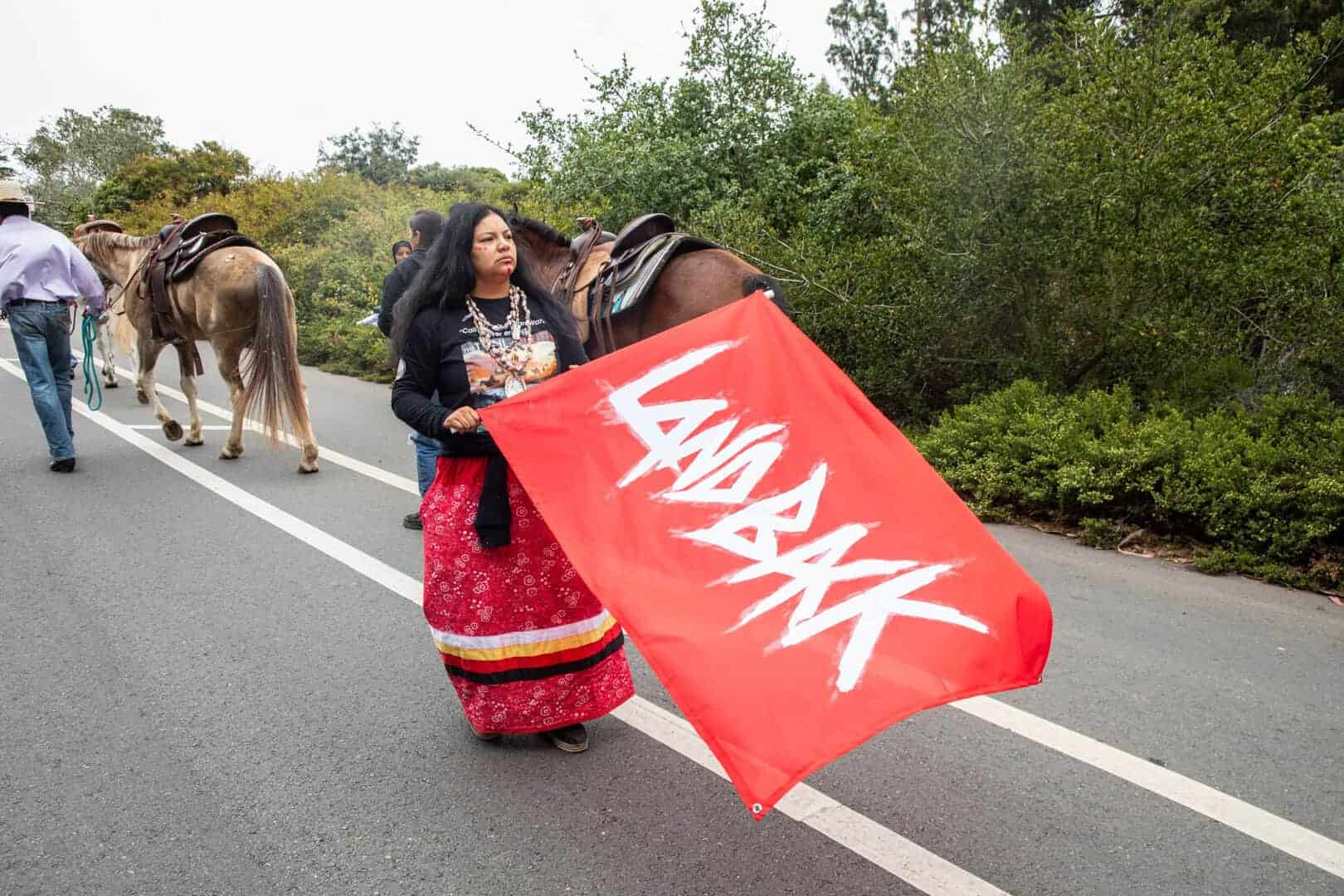
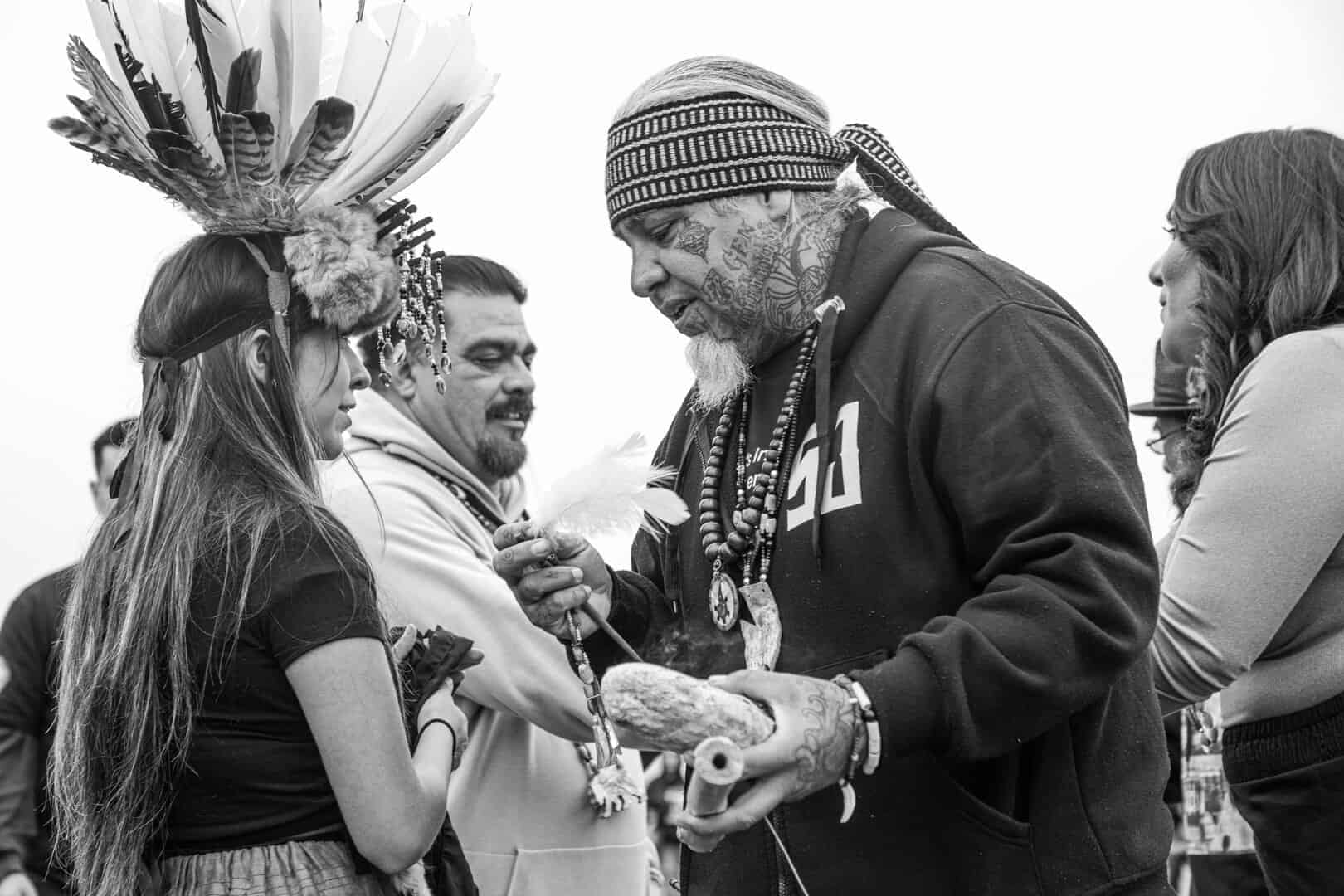
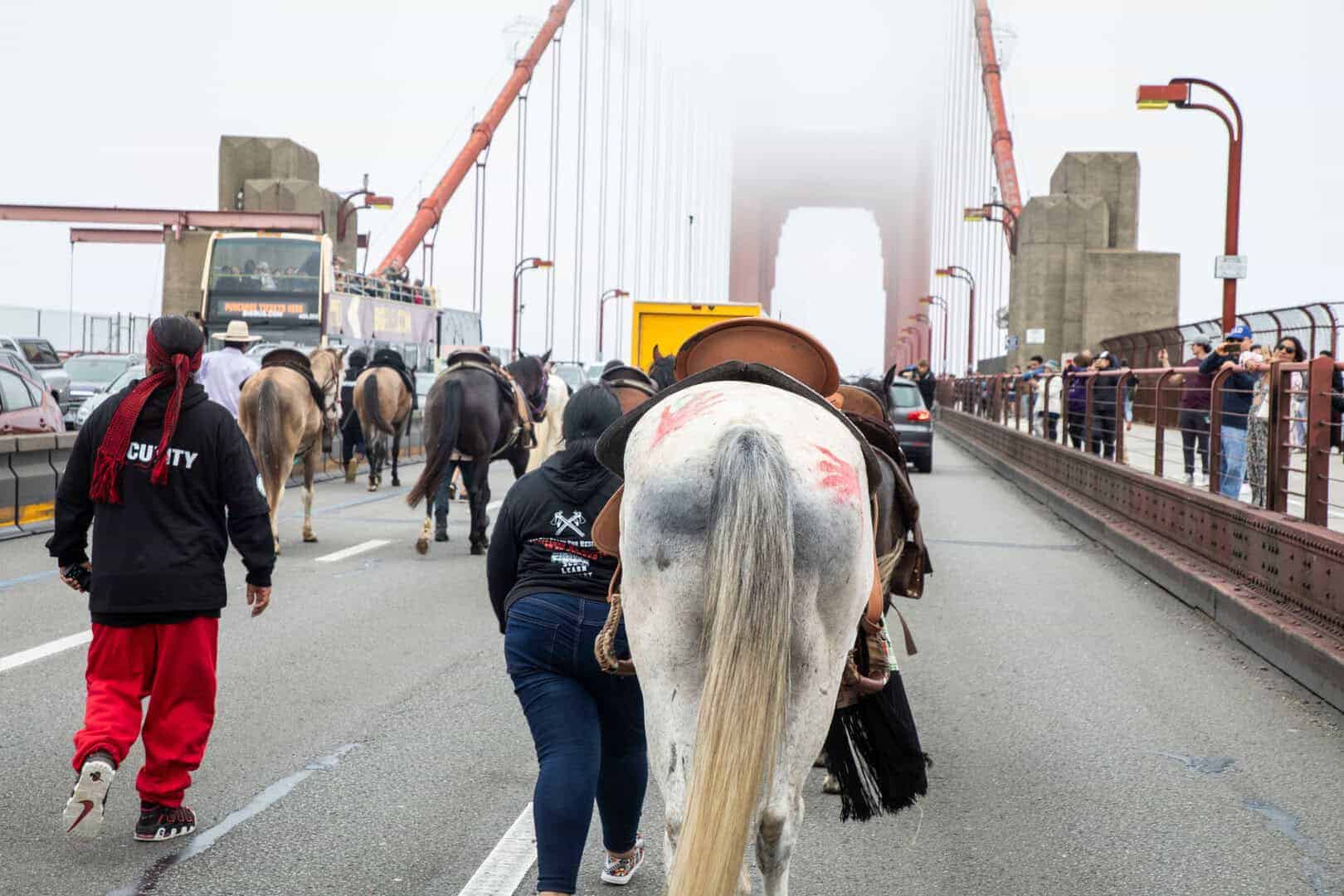
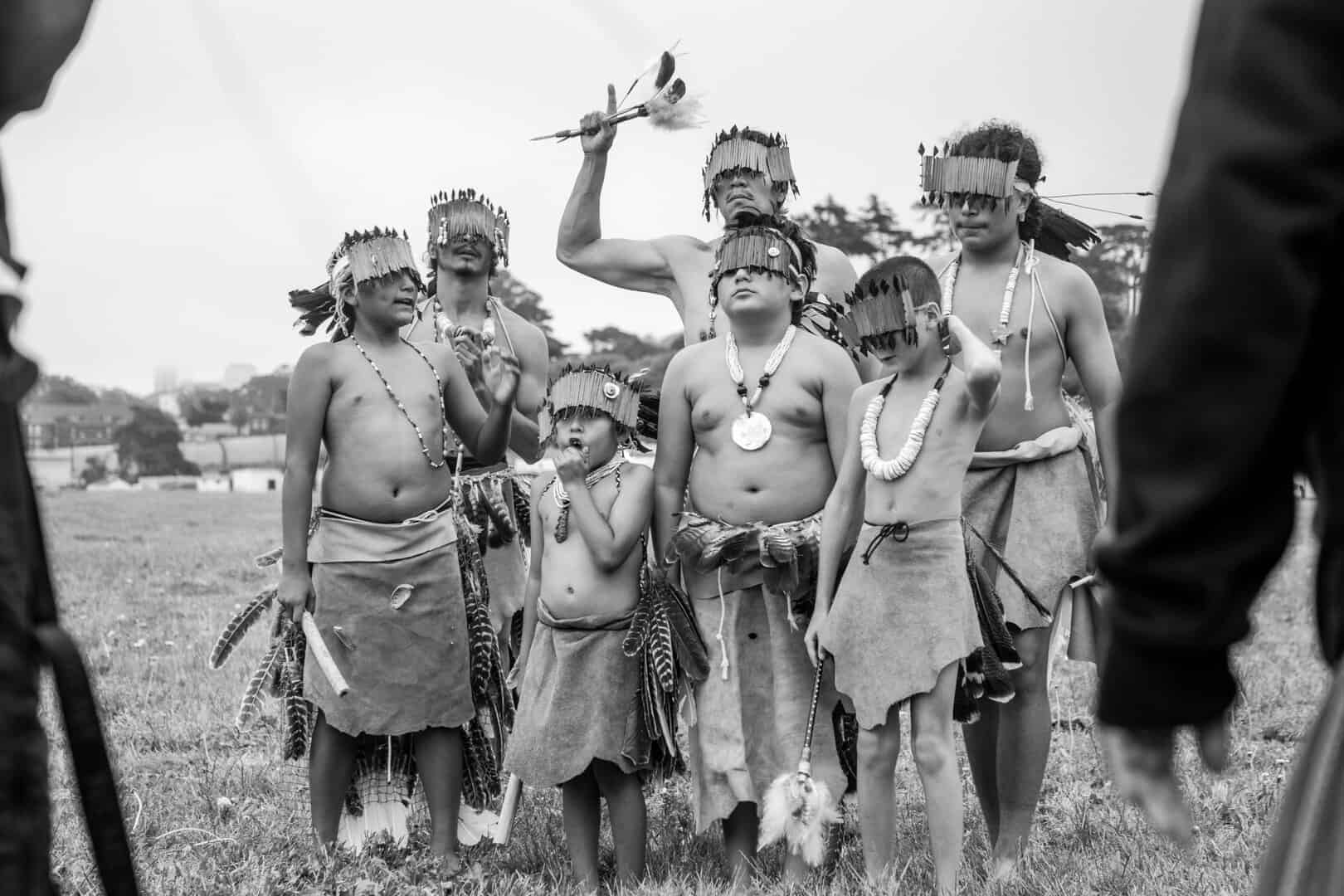

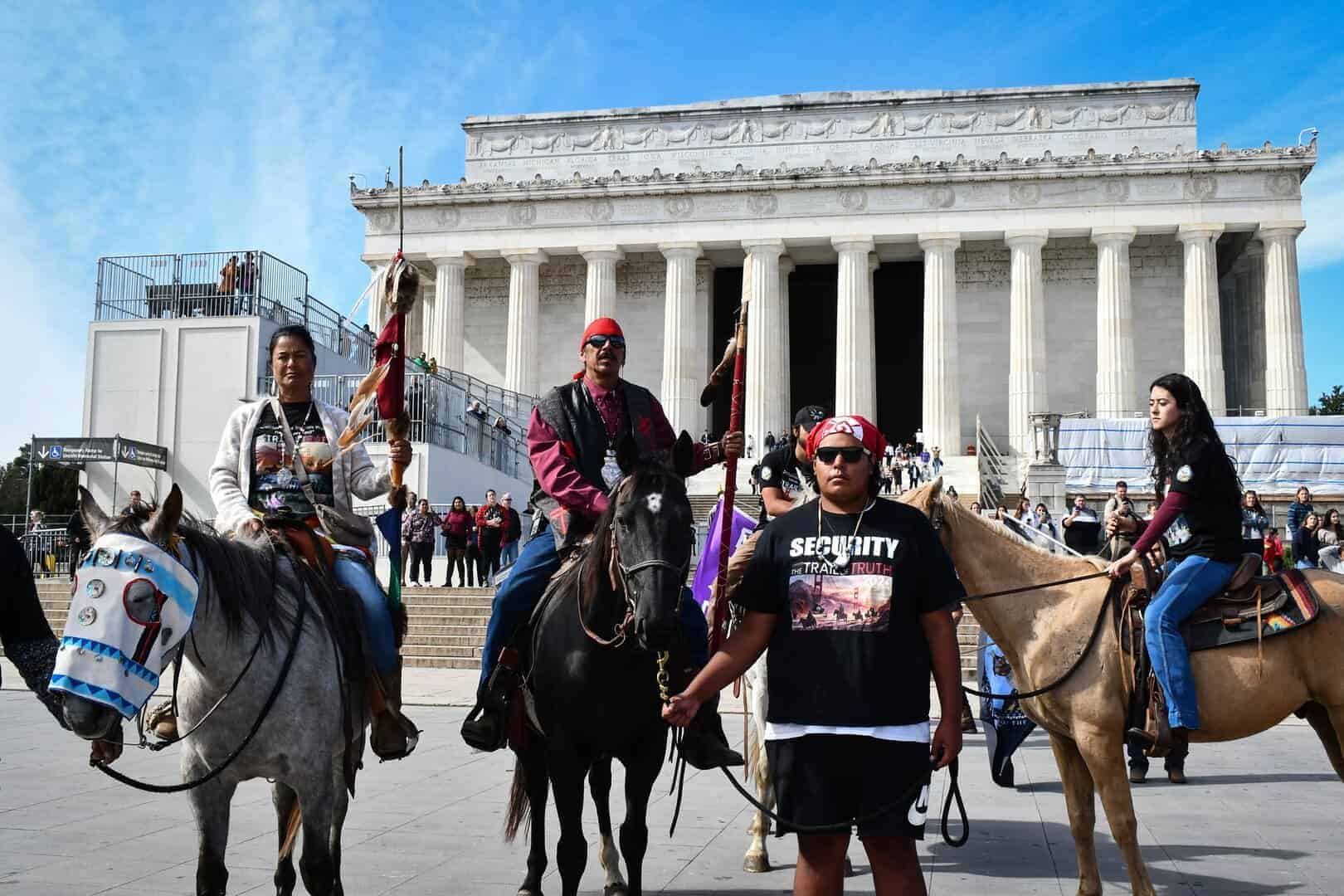
In 2024, Muwekma embarked on the Trail of Truth, a 90-day cross-country journey from San Francisco to Washington, D.C., to demand federal recognition and justice for unrecognized tribes. Along the way, they were joined by members of over 30 other tribes, fostering national intertribal relations. Upon arrival in D.C., they faced violent responses from law enforcement, including arrests and physical confrontations, as they attempted to bring their message to the nation’s leaders. Despite these challenges, Muwekma’s commitment to sovereignty and recognition remained unwavering.
Meanwhile, Corrina Gould–while formerly associated with service delivery at the American Indian Child Resource Center–has used her platform through Indigenous People Organized for Change and especially through Sogorea Te Land Trust to build what is, at its core, a personal fundraising machine, not a tribal government. And she built it at the expense of real Muwekma–and in the Chochenyo context, Muwekma means “the people” [“la gente“.] She has rebranded the people as herself, and turned their collective legacy into her private gain.
Her base of support is not grounded in local tribal governance. It comes largely from non-Native institutions, funders, and Native individuals with no ancestral ties to this land. Meanwhile, the real Ohlone Tribe is pushed aside in favor of symbolic leadership that offers visibility, but not accountability.
Once faced with the facts, I had to admit that I was wrong. I had been led by a compelling story–but the truth was stronger. So I did what solidarity demands: I apologized, publicly withdrew my support for the Confederated Villages of Lisjan, and committed to telling the truth.
Because protecting Indigenous sovereignty sometimes means telling hard truths–and refusing to participate in feel-good illusions.
6. The Harm Is Real (And Measurable)
This isn’t just a difference in opinion. It isn’t a clash of personalities. And it certainly isn’t a harmless misunderstanding.
When institutions platform Corrina Gould as a tribal leader, or treat the Confederated Villages of Lisjan as a legitimate tribal government, they are doing more than making a mistake–they are actively undermining the sovereignty of the real Ohlone Tribe. They are diverting resources, land, funding, and political capital away from Muwekma, and into the hands of a private organization with no legal standing, no elections, and no tribal citizenry.
This harm isn’t abstract. It’s measurable.
- Millions of dollars in philanthropic and public funding intended for Indigenous land return and cultural revitalization have gone to a nonprofit corporation with no recognized tribal status.
- Sacred land–like the site of the West Berkeley Shellmound–has been transferred to Sogorea Te Land Trust, a non-tribal organization, under the false pretense that it represents “the Ohlone people.”
- Shuumi Land Tax–individuals and institutions are encouraged to believe they are contributing directly to “the Ohlone people,” yet the money flows to Sogorea Te Land Trust rather than to the Muwekma Ohlone Tribe, which further entrenches a fictional framework and diverts resources away from the only tribal government tied to this land.
- Public institutions, including cities and universities, have entered into consultation relationships with Gould and her affiliates, bypassing Muwekma entirely–despite Muwekma’s documented federal recognition and direct ancestral connection to the land in question.
- Land acknowledgments, educational materials, and grant applications are being written and approved using a fictional framework, misleading the public and distorting the historical record.
- Nonprofits and state agencies increasingly treat Sogorea Te Land Trust as the default Ohlone contact, creating a monopoly of voice that drowns out the actual tribe’s legal claims and cultural continuity.
These are not harmless errors. They are a form of structural erasure–the exact kind that has plagued Native nations for generations. When land meant for Indigenous people is given to a nonprofit posing as a tribe, that is not reparation. That is dispossession in progressive packaging.
This is particularly dangerous because the harm is disguised as justice. The very people who claim to be “decolonizing” are recoding colonization into a new language of rematriation, visibility, and inclusion–but behind the optics, the effect is the same: the real tribe is left out. The real tribe is defunded. The real tribe is made invisible.
And let’s be clear: the people being erased are not theoretical. Muwekma has over 600 enrolled members. They are the living successors of the Verona Band. They have filed lawsuits, preserved records, won recognition, buried their dead, held their ceremonies, and never left their land.
But when outsiders accept Gould’s narrative at face value–when they hand over land and money without due diligence–they don’t just cause confusion. They help erase those 600+ people from the public record and from the future of their own homeland.
This harm is worsened by the fact that many of Gould’s supporters are not Ohlone, not from this territory, and in many cases, not even Native. Her occupation of Sogorea Te (Glen Cove Park in Vallejo) was carried out over the objections of local Wintu and Patwin tribal leaders, who viewed her presence as invasive and inappropriate–and who were already in the middle of negotiations with the city. Once again, her support came not from the tribes whose land she claimed to defend, but from outsiders–many of whom lacked the cultural or historical context to recognize the damage being done.
This isn’t pan-Indigenous solidarity. This is outsider-enabled erasure masquerading as justice.
And if you’ve ever promoted Corrina Gould as a tribal leader…
If you’ve ever funded Sogorea Te Land Trust believing it was an Ohlone-run tribal entity…
If you’ve ever written a land acknowledgment, curriculum, or policy that names CVL without verifying its legitimacy…
Then you’ve been part of this harm.
You didn’t just uplift the wrong narrative.
You helped erase a federally documented tribe.
You helped redirect land, funding, and power away from 600 living descendants of the Verona Band–and handed it to a nonprofit that exists because Muwekma gave one woman access to her genealogy.
This isn’t theoretical. This is real.
Real people. Real land. Real erasure.
You didn’t decolonize anything.
You just changed the branding.
7. This Is Muwekma Land

Let’s be clear: this is the unceded ancestral homeland of the Muwekma Ohlone Tribe of the San Francisco Bay Area.
The East Bay–including the very places where Corrina Gould operates, where cities write “rematriation” into land agreements, and where nonprofit funders congratulate themselves on “land return”–sits squarely within the ethnohistoric territory of the Chochenyo- and Thámien-speaking Ohlone tribal groups and intermarried Muwekma Ohlone and Bay Miwok ancestors. These were not abstract “villages.” They were governed communities with kinship ties, linguistic identity, and ceremonial responsibilities. Their descendants are now enrolled in the Muwekma Ohlone Tribe.
These people were forced into Misión San José de Guadalupe, Misión Santa Clara de Thámien, and Misión San Francisco de Asís. Their names and records exist in the mission rolls, in the ethnographic interviews, in the early court filings, and in the federal Indian rolls. Their presence on this land was never erased–only ignored.
Muwekma didn’t vanish. Muwekma was excluded–deliberately and illegally. And they never stopped fighting to be seen.
They are not a nonprofit. They are not a brand.
They are not “one of many Ohlone groups.”
They are the documented, federally acknowledged, and unlawfully derecognized successors of the Verona Band of Alameda County–and the only Ohlone tribal government with a continuous ancestral, cultural, and political presence in this region.
They are the tribe that:
- Has maintained ceremonial stewardship of sacred sites and burials.
- Has documented every ancestral line with forensic-level precision.
- Has filed for federal restoration and fought institutional exclusion for over a century.
- Has survived the missions, the ranchos, the Gold Rush, the boarding schools, and the bureaucracies–and is still here.
To pretend that this land is “returned” by handing it to a nonprofit corporation with no governing authority, no intertribal legitimacy, and no community accountability is not just inaccurate–it is a continuation of colonization.
It is the institutional funding and support of settler colonial violence–the same erasure, dispossession, and genocide that removed tribes from their land in the first place, now rebranded as “rematriation” for white comfort.
The land hasn’t been returned until it’s returned to the people it was taken from.
This is not “Lisjan territory.”
This is not “rematriated space.”
This is Muwekma land.
8. To Stand With Ohlone People Is to Stand With Muwekma
By now, the facts are clear:
- The Muwekma Ohlone Tribe of the San Francisco Bay Area is the only tribal government with documented continuity, legal standing, and ancestral responsibility for this land.
- Their aboriginal homeland includes what is now known as San Francisco, San Mateo, most of Santa Clara, Alameda, and Contra Costa Counties, as well as portions of Napa, Santa Cruz, Solano, and San Joaquin Counties.
- The present-day Muwekma Ohlone Tribe consists of the descendants of the Indigenous people who were forced into Misión San José de Guadalupe, Santa Clara de Thámien, and San Francisco de Asís.
- Cities like Oakland, Berkeley, Emeryville, Albany, El Cerrito, Richmond, Fremont, Hayward, Niles, and Pleasanton sit squarely within this territory.
Still, some people will ask, “Why are you criticizing other Indigenous-led groups?”
Here’s the answer:
“Representation isn’t just about who shows up — it’s about how they show up.
When groups claim Indigenous identity without tribal recognition, without elections, and without consulting other Native peoples, it’s not real representation.
Holding people accountable protects Indigenous identity — it doesn’t attack it.”
Others will say, “Aren’t you worried this undermines solidarity?”
Not if you understand what real solidarity is:
“Solidarity built on misinformation is a weak foundation.
Real solidarity requires honesty — even when it’s uncomfortable.
Protecting Indigenous sovereignty sometimes means telling hard truths, not participating in feel-good illusions.”
And if you’re asking, “Well, what should I do instead?”
Start here:
“Support federally recognized and state-recognized tribes, or groups with real historic documentation and transparent leadership.
Always ask: Who benefits? Who was consulted? Where is the money going?
Good intentions matter — but real relationships and accountability matter more.”
If you are an educator, funder, or ally who needs structured help doing this work without repeating these harms, I also teach an online series called Nations vs Nonprofits: How Well-Meaning Allies Can Tell the Difference. It walks through due diligence, red flags, and concrete steps for shifting support toward real Tribal Nations instead of corporate nonprofits posing as them. You can RSVP for the next session here.
Let’s stay focused on the facts.
It’s not about personal feelings — it’s about who has the rightful voice, and who’s building legitimacy at the expense of Indigenous communities.
If you’ve platformed Corrina Gould or the Confederated Villages of Lisjan without doing your homework, then yes–you’ve been misled. Now that you know Sogorea Te Land Trust is not an Ohlone tribe or organization, it’s on you to stop giving them money and land. Because at this point, you’re not helping–you’re enabling the lie. You’re disrespecting the real Ohlone Tribe and their 600+ enrolled members, and you’re disrespecting their ancestors’ living legacy.
Non-Native people created this problem, and then doubled down and made it worse. So it’s on them to fix it–by demanding accountability. Find out where your money is going. Ask who’s being left out. Demand that Sogorea Te Land Trust include the rightful Ohlone tribe of the East Bay: the Muwekma Ohlone Tribe of the San Francisco Bay Area.
If non-Native people are really about all this land defender and water protector, rematriation, land back rhetoric they love to post about–
Then they’ll fight just as hard for a real tribe
As they fight for a fucking parking lot.
“Indigenous sovereignty isn’t a brand.
It’s a responsibility to the ancestors and a duty to future generations.
I’m here to protect that — without apology.”
Sources
Primary Sources from Muwekma Ohlone Tribe
- Muwekma Ohlone Tribe Official Website
- An Ethnohistory of Santa Clara Valley and Adjacent Regions: Historic Ties of the Muwekma Ohlone Tribe and Tribal Stewardship Over the Tupiun Táareštak Site (CA-SCL-894)
Monica V. Arellano, Alan Leventhal, Rosemary Cambra, Shelia Guzman Schmidt, Gloria Arellano Gomez (2014)
PDF Link - Muwekma Opening Brief (Filed legal document)
PDF
Official Statement
- Public Statement on Corina Gould, the Confederated Villages of Lisjan, and Sogorea Te Land Trust
Received directly from the Muwekma Ohlone Tribe of the San Francisco Bay Area (May 1, 2025)
News & Archival Sources
- Stanford Daily (Nov 4, 2024)
“Muwekma Ohlone Demonstrators Face Violence in D.C.” - East Bay Times (Apr 5, 2013)
“Mr. Ohlone Who Helped Name Fremont College Dies” - SF Weekly (2002)
“The Little Tribe That Could” - SF Weekly (2006)
“Bones of Discontent: Andrew Galvan Carves a Unique, Controversial Role in Relocating Native American Skeletons” - Calisphere Archive (UCLA)
Photo: Rosemary Cambra Stops Construction in 1985 with a Shovel
Academic Reports & Federal Records
- Ohlone/Costanoan Indians of the San Francisco Peninsula and Their Neighbors, Yesterday and Today (2009)
Randall Milliken, Laurence H. Shoup, Beverly R. Ortiz – for the National Park Service
PDF Link - A Time of Little Choice: The Disintegration of Tribal Culture in the San Francisco Bay Area 1769–1810 (1995)
Randall Milliken – Ballena Press Anthropological Papers No. 43
Publisher Link - J.P. Harrington Chochenyo Field Notes and Vocabulary (1921)
Smithsonian Institution – National Anthropological Archives, Collection of John Peabody Harrington - Ancient and Modern Genomics of the Ohlone Indigenous Population of California (2022)
Severson, Ramstetter, Kennett, et al. – Proceedings of the National Academy of Sciences (PNAS)
PDF Link
Alameda Native History Project Articles
- Who, What, and Where is Lisjan? (2024)
Gabriel Duncan – Alameda Native History Project – https://nativehistoryproject.org/post/alameda-native-history-project/who-what-and-where-is-lisjan/


